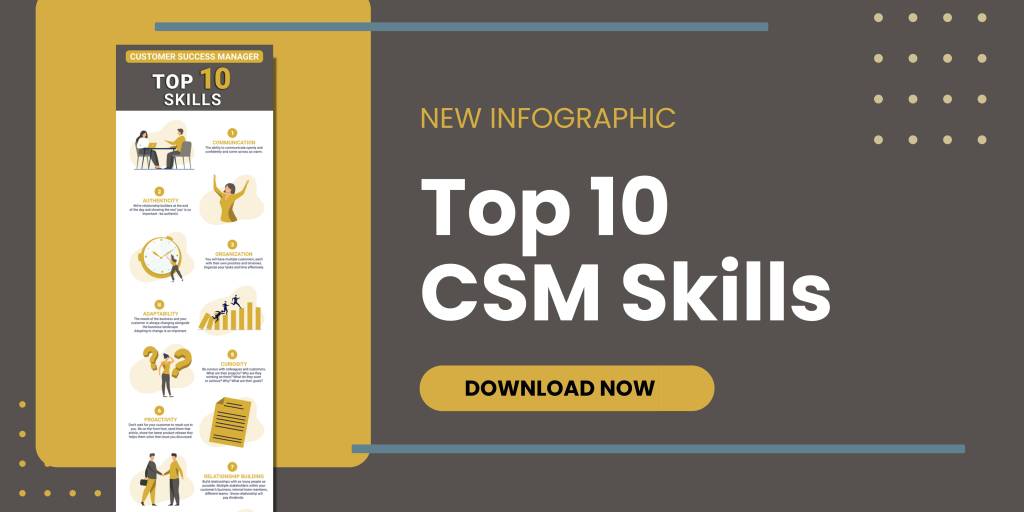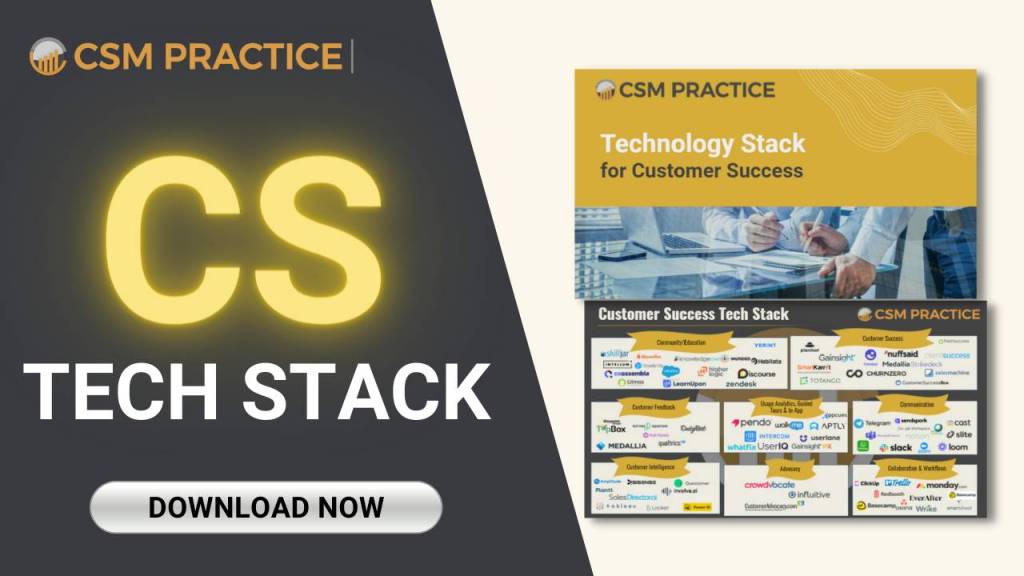In the technology industry, Customer Success Management is a growing practice. There is also an increase in the popularity of SaaS (Software as a Service) as a software licensing and delivery model. As a result, the traditional customer-vendor relationship, which now mostly applies to on-premise solutions, has changed dramatically. In many ways, Customer Success has become synonymous with SaaS.
But what about on-premise clients? To try to assess the answer to this question, I interviewed Noy Bar, Americas Region Customer Success Manager at HP Enterprise and Anna Connell, Sr. Director of Global Subscription Sales at Proofpoint. In this blog, I share their observations on the differences between Customer Success programs for SaaS and those for on-premise, derived from their professional experience over the past few years.
The reality is that most on-premise companies don’t yet offer a Customer Success program. Those who do, customize the program to the different needs, behaviors, and expectations of on-premise clients. This raises a couple of questions: “How different is the approach to Customer Success between the two licensing models?” and “How does this difference affect the role of the Customer Success team?”
The Main Differences Between SaaS and On-Premise Customer Success Programs
Even though SaaS solutions are increasing in popularity, there are still many companies that only offer on-premise solutions or a combination of the two. When comparing Customer Success programs for both licensing models, there are four distinct differences between the two:
- Level of Reactiveness
- Level of Engagement
- Level of Expectations
- Customer Success metrics
1. Level of Reactiveness
Traditionally speaking, on-premise clients are not accustomed to having a formal Customer Success program. Their journey typically begins with the sales team who, just like in SaaS, is responsible for making the sale. Then, the customers are assigned professional services consultants to implement the solution and train them in using it. In many companies, transitions to support will occur upon completion of the implementation process. Unfortunately, without an orderly Customer Success program, the next interaction between the vendor and the client often occurs around 90 days before the renewal date.
Regardless of a formal Customer Success program, the lack of proactive interaction with on-premise clients is not uncommon. Customer-vendor relationships tend to revolve around technical issues and being reactive to client outreach. Why so? On-premise customers tend to manage the solution in-house and only reach out when a problem occurs. In addition, without usage data, it becomes difficult to know how and by whom the on-premise solution is used, making proactive outreach a larger challenge.
Preventing churn is a bigger challenge. For example, a customer might be seething about the product, but the vendor might not know about it until after the customer has found and implemented another solution to replace it. As such, current on-premise Customer Success initiatives tend to be more reactive and focus on renewal processes.
2. Level of Engagement
In general, one could say that on-premise solutions tend to be much more customized. The customization process ultimately helps on-premise product adaptation, making it much stickier than SaaS. To achieve a successful customization process, Customer Success programs for on-premise typically include some form of Technical Account Management (TAM) as well as other value-added services that the customer can opt into for a fee. A typical Technical Account Manager (TAM) engages with customers when complex problems arise. They leverage their expertise to dig deep into their customer’s systems and business environment to solve the issue at hand. Similar to a Customer Success Manager in a SaaS company, a TAM reinforces the value of the product and develops a trusted advisor relationship while helping their clients solve technical challenges.
Comparatively, companies that offer SaaS tend to engage with customers more frequently and proactively. SaaS companies will often have a Customer Success Manager (CSM) who focuses on the development of an ongoing relationship through value-based interactions that are not specifically related to a technical issue, a change in business processes, or a bug.
It’s not unusual for a SaaS company to have both a CSM role as well as a TAM, where the TAM function differs from a CSM mainly in their technical knowledge of the solution. In this case, the TAM will mainly serve as the client’s solution expert, while the CSM will function as the client’s trusted business value advisor and main contact person. In this scenario, the CSM helps the client solve related business challenges, suggests new processes, advises on industry best practices, and becomes the client’s internal advocate. The TAM, on the other hand, will collaborate with the CSM as a solution architect to implement new ideas, to expand the use cases, as well as to resolve escalations of complex technical issues that can’t be resolved by the support team.
Customer Success Managers are trusted business value advisors that ensure customers receive ROI.
3. Level of Expectations
SaaS clients typically have an entirely different level of expectations from their Customer Success Manager than that of on-premise customers. SaaS customers have high demands because they only have to pay for what they use (if the value is not realized, they will stop paying and churn). To a great extent, SaaS clients shift the implementation risks, the responsibility for their success, and the cost of services back to the vendor. Many SaaS clients have been conditioned to expect the Customer Success Manager to react much faster (if not immediately), when major problems occur. Moreover, a CSM will often have to continuously demonstrate the value delivered each time they meet the customer. They also need to offer additional insights on how more value can be derived (which is not always easy or straightforward).
As for on-premise customers, the CSM and the TAM roles are about maintaining the relationship and making sure they react appropriately when the customer is at risk or calls for help. Since no usage data is available, regular meetings with clients are imperative for on-premise engagements. Client meetings are one of the only means for a CSM to check the pulse on the customer’s overall health. Voice of the Customer programs are also important for both SaaS and on-premise, but they are more critical for on-premise programs. These programs allow on-premise companies to hear their clients even without having to rely on usage data and meetings with the CSM. Therefore, investing in a Voice of the Customer program increases the probability of the successful execution of a Customer Success strategy.
4. Metrics
Renewal rates for on-premise customers tend to be higher than that of SaaS, which also contributes to the differences we see in metrics tracked by Customer Success teams in each of the licensing models. Most times, the emphasis for a SaaS Customer Success team is placed on their ability to help customers grow, so key performance indicators include usage trends, renewal rates, ROI, etc. With no usage data, on-premise CSM teams tend to focus on other key metrics such as NPS scores, support ratings, customer feedback, etc.
The financial metrics are important for both types of delivery models and may include key performance indicators such as renewal rates, early renewal rates, customer churn, and account add-ons. Lastly, for on-premise CSM teams, tracking non-usage metrics and analyzing customer feedback consistently is an important aspect of increasing opportunities for client interactions and strengthening the relationship between the customer and the vendor.
The transition from On-Premise to SaaS
As mentioned, we see an increase in the number of companies that are transitioning from on-premise to SaaS. While SaaS is predicted to be the delivery model of tomorrow, moving existing customers from on-premise to SaaS is not trivial. Noy Bar from HP Enterprises says, “The main issue customers are concerned about during the transition is security.” Noy recommends placing a great emphasis on product functionality and facilitation of the transition process to encourage customers to switch from on-premise to SaaS.
It is also critical to consider that the client’s transition from on-premise to SaaS will typically be a long and sometimes complicated one. Expect that many customers will, for a period, have a mix of both your on-premise and SaaS solutions, until the transition is complete. Therefore, Customer Success efforts should reflect the customer’s mix and not only be directed towards SaaS solutions, but towards the overall account strategy regardless of which products they own, subscribe to, or are transitioning towards. When offering both on-premise and SaaS, a company should structure its customer success approach based on the mere fact that clients do not differentiate between customer care provided for different types of licensing models. Negligence in one area can damage the entire relationship.
Opportunities for Growth
There are a lot of possibilities for growth when it comes to customer success for on-premise customers. Working with these on-premise clients presents additional challenges that typically don’t exist in SaaS. However, despite the lack of necessary usage data and infrequent touchpoints, there is an enormous potential for influencing this underserved group of customers in a positive manner. This is achieved by developing strong customer advocacy and advisory programs and by continually improving product adaptation processes.
To leverage these opportunities, the role of a CSM must be valued and appreciated. It is imperative that adequate training is provided. Management should equip the CSMs with the skill set needed to deal with challenges and overcome objections. The organization should also consider training and certifications to empower Customer Success, renewals, and other customer-facing teams to act in the best interest of the customers by focusing on win-win solutions. After all, each CSM must understand the customer’s business problems and challenges, and address them as a trusted advisor while ensuring revenue growth. Anna Connell recommends, “Provide your Customer Success Managers with coaching and set them up with a mentor. It works.”
Summary
In summary, we can clearly see different characteristics in SaaS and on-premise Customer Success programs. Despite the differences, companies that implement robust Customer Success programs will enjoy higher revenue growth and an active community of advocates. Whether your company offers SaaS or on-premise solutions, scaling your Customer Success programs using related CSM technologies must include focusing on automating processes and ensuring consistent customer experiences.






